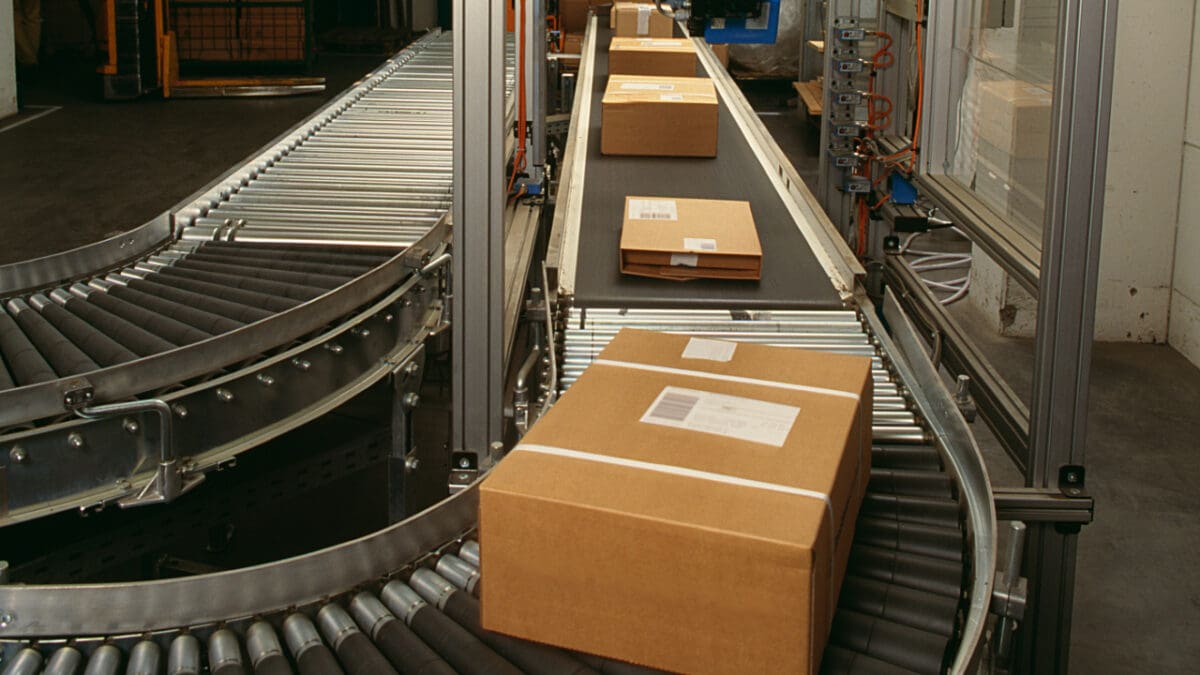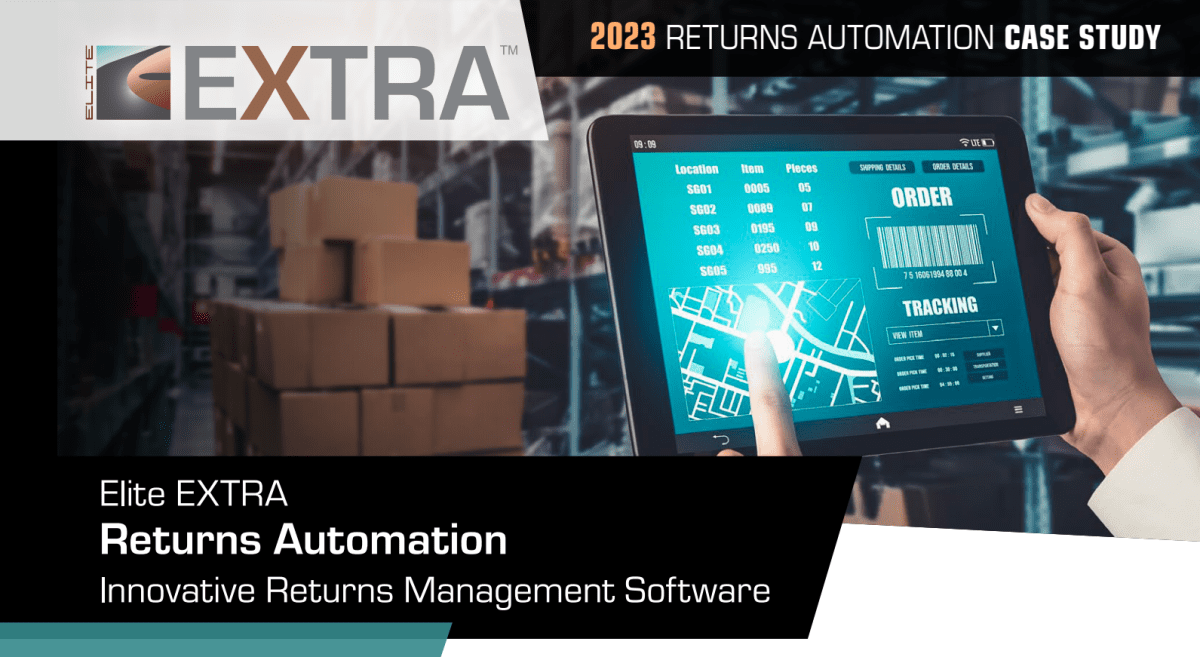
The reverse supply chain is often overlooked but plays a significant role in modern logistics. This process handles everything after the sale—returns, refurbishing, recycling, and reselling products. With sustainability becoming a big priority and customer expectations rising, businesses need to understand and master their reverse logistics to stay competitive.
Managing the reverse supply chain isn’t just about handling returns; it’s about turning those returns into opportunities. It can help businesses cut costs, improve customer satisfaction, and reduce waste. Whether reselling refurbished products, recycling materials, or making the return process seamless, the reverse supply chain is key to boosting both profits and sustainability. Logistics managers and business owners who focus on this area can unlock serious value, keeping customers happy while staying eco-friendly and efficient.
Mastering your reverse logistics is no longer optional—it’s a competitive edge.
What is the Reverse Supply Chain?
The reverse supply chain is all about moving products in the opposite direction from the typical supply chain flow. Instead of sending goods from manufacturers to consumers, the reverse supply chain focuses on handling products returned from customers. This might include returns, items needing repairs, or products that require recycling or disposal at the end of their life cycle.
In the reverse supply chain, companies manage key processes like returns management, refurbishing, repackaging, recycling, and reselling. When a customer returns a product, it doesn’t just end up back on a shelf. It often goes through several steps, like inspecting for damage, deciding if it can be resold, or determining if it should be refurbished. If the product can’t be salvaged, it might be recycled for materials, reducing waste and contributing to more sustainable practices.
What sets the reverse supply chain apart from the traditional one is that it’s not just about speed and efficiency. Instead, it focuses on recapturing value from returned or discarded goods and minimizing the environmental impact. This approach can make a big difference for businesses trying to reduce their carbon footprint while also saving money by reusing products that would otherwise be discarded.
By managing the reverse supply chain effectively, companies reduce waste and unlock opportunities in the secondary market, reselling refurbished goods at a lower price or recycling materials for further use. This process is vital as businesses shift toward more sustainable practices, making reverse logistics a key piece in the overall supply chain puzzle.
Key Stages of the Reverse Supply Chain
The reverse supply chain comprises several important stages that help businesses manage returns and maximize the value of returned products.
1. Returns Management
Returns management kicks off the reverse supply chain by focusing on handling customer returns. A well-organized system allows businesses to process returns quickly, evaluate the condition of the returned items, and decide the best course of action. This could mean restocking, refurbishing, or recycling the product. A streamlined returns process can cut costs and boost customer satisfaction by making things easier.
To optimize your reverse supply chain, it’s important to make the return process seamless for customers. This starts with having clear, easy-to-understand return policies and providing easy-to-print return labels. Simplicity here can boost customer satisfaction and reduce confusion, and using comprehensive logistics software to track returns is also vital. This technology allows businesses to monitor the status of returned items in real time and quickly assess their condition. By evaluating returns efficiently, companies can make faster decisions about whether to restock, refurbish, or recycle the product, ultimately enhancing operational efficiency and minimizing delays.

2. Refurbishment and Repackaging
After a product is returned, it often undergoes a refurbishment or repackaging. This involves repairing or reconditioning the item to return it to sellable condition. Refurbished goods are a fantastic way for businesses to recapture value since they can be resold at a lower price without producing entirely new products. This appeals to customers looking for more affordable options.
Refurbishment is a common practice in industries like electronics. Smartphone manufacturers often refurbish returned or defective devices, bringing them to like-new condition and selling them at discounted prices. This allows the company to regain some of the product’s value that might have been lost while also offering customers budget-friendly alternatives. The refurbishment and repackaging process is a win-win, benefiting both businesses and customers by extending the life cycle of products and reducing environmental impact.
3. Recycling and Disposal
When products can’t be refurbished or repaired, they often end up in the recycling or disposal stage. More companies are turning to eco-friendly methods to deconstruct these products into recyclable materials like plastics and metals. Recycling minimizes environmental harm and can also help businesses generate extra revenue from recovered materials.
Companies prioritizing eco-friendly disposal practices boost their reputation for doing the right thing, confirming they’re following environmental regulations, and staying legally clear.
4. Resale and Secondary Markets
When a product is still in good shape or refurbished, businesses can tap into secondary markets to recapture value. These platforms, like online outlets, discount stores, and resale websites, offer an opportunity to sell returned goods at a discounted price. This is an excellent way for businesses to minimize losses and avoid waste while appealing to price-sensitive customers who are always looking for deals.
The resale market has exploded, particularly in categories like fashion and electronics. Platforms like eBay, ThredUp, and other resale giants have seen massive growth as more consumers embrace second-hand shopping. This growing market helps businesses regain part of their investment from returned products and supports sustainability efforts by giving items a second life instead of sending them to landfills.
In short, the reverse supply chain is about more than just managing returns—it’s a smart strategy to cut waste, recover value, and boost environmental responsibility. Businesses can turn returned products into profitable and eco-friendly opportunities by leveraging secondary markets.
Benefits of a Strong Reverse Supply Chain
Building a solid reverse supply chain brings many benefits, from saving money to boosting customer loyalty and staying on top of regulations.
1. Cost Savings
Cost savings are among the biggest perks of a well-managed reverse supply chain. When businesses refurbish or resell returned products, they reduce waste and make the most of returned items. Handling returns efficiently also means lower storage and labor costs and less need for new materials.
Companies that refurbish and sell products again, like electronics, save on production costs and keep more items out of landfills, which is both cost-effective and environmentally friendly.
2. Sustainability
Sustainability is becoming a huge focus for businesses, and the reverse supply chain plays a big role in supporting those efforts. It encourages recycling, reusing materials, and cutting down on waste. By using eco-friendly disposal methods, businesses shrink their carbon footprint and boost their reputation for being environmentally conscious.
Over 60% of consumers now factor in a company’s sustainability practices before buying, so having green reverse logistics is a major selling point.
3. Customer Satisfaction
A smooth reverse supply chain can significantly impact customer satisfaction. Offering easy returns and exchanges helps build loyalty and keeps customers coming back. The ease of returning products is often one of the top reasons customers shop with a particular retailer.
95% of customers say they’re more likely to shop again with a business that provides a positive returns experience.
4. Regulatory Compliance
Some industries, like electronics and pharmaceuticals, have strict returns, recycling, and disposal rules. A well-structured reverse supply chain promises that companies comply with all regulations, helping them avoid costly fines or penalties.
Investing in the reverse supply chain is good for the environment, your bottom line, and your customer relationships.
Challenges in Managing the Reverse Supply Chain
While a well-organized reverse supply chain can bring many benefits, managing it can be tricky.
1. Complexity of Logistics
Handling returns, recycling, and reselling isn’t as simple as sending products to customers. Reverse logistics requires juggling multiple processes and channels, which can be tricky to coordinate. Unlike traditional logistics, where products move in a single direction (from manufacturer to customer), reverse logistics means products return through various routes. Each product might need a different approach—some need refurbishment, some recycled, and others resold. Keeping track of everything requires precise coordination and planning.
2. Cost Considerations
While a solid reverse supply chain can lead to savings, there are upfront costs to consider. Processing returns, refurbishing items, or recycling products all come with their own set of expenses. Inspecting, repairing, and preparing returned goods for resale costs time and money. Businesses must determine if the potential value they can get from reselling products outweighs these costs.
3. Tracking and Visibility
One of the biggest hurdles in reverse logistics is tracking. Forward logistics, which focuses on delivering to customers, often comes with solid tracking systems. But reverse logistics doesn’t always have the same level of transparency. This lack of visibility can lead to misplaced returns or delays in processing items. Without good tracking, businesses can lose valuable information about what’s coming back and being resold, making optimizing the reverse supply chain harder.
Successfully managing these challenges is essential for any business looking to maximize the value of its reverse logistics operations.
Best Practices for Optimizing Your Reverse Supply Chain
Optimizing your reverse supply chain is key to improving efficiency, cutting costs, and getting the most value out of returns.

1. Invest in Technology
Technology is transforming today’s logistics world. Implementing reverse logistics software can streamline the entire returns process, reducing human error and making it easier to track returned products. Solutions like Elite EXTRA’s Returns Automation give businesses real-time visibility into the condition of returned goods, allowing for faster decisions on whether to resell, recycle, or discard items.
Automation helps businesses make data-driven choices, cutting down on manual tasks and speeding up turnaround times. With tools like Elite EXTRA’s system, companies can optimize inventory and improve cash flow by quickly reintroducing products into the resale market or efficiently disposing of unsalvageable items.
Benefits of Automation:
- Minimizes manual errors, leading to smoother returns processing.
- Enhances visibility into the condition and status of returned goods at every stage.
- Reduces turnaround time, helping businesses quickly return returned products to the market.
2. Implement Clear Return Policies
A smooth return process begins with a clear, customer-friendly return policy. Customers want transparency regarding returns, so your policies must be straightforward to understand. Define clear conditions under which returns are accepted and make sure the process for returns is hassle-free. Simplifying return labels and shipping instructions can drastically reduce errors and improve customer satisfaction.
A clear returns policy also helps your team handle returns more efficiently. Confusion is minimized when everyone understands the rules and the process flows smoothly.
Best Practices for Return Policies:
- Ensure transparency by clearly stating return conditions.
- Provide customers with simple, easy-to-use return labels.
- Regularly review and adjust your policy based on customer feedback and return trends.
Case Study: Real Results with Elite EXTRA’s Returns Automation
After nearly a year of implementing Elite EXTRA’s Returns Automation software, early industry users saw remarkable return process improvements. To gain insights into these changes, we included a range of participants, including outside sales reps, parts managers, and operations leaders, to collect data on their experiences with the platform.
The combined feedback from these users tells a compelling story:
- Across all participants, $272,000 worth of accepted returns were processed, showcasing the system’s efficiency in managing large volumes of returns.
- On average, companies saw a 50% faster return credit turnaround, meaning customers got their refunds much quicker. This sped-up process directly impacted customer satisfaction, keeping customers happy and more likely to return for future purchases.
- The platform helped reduce lost return costs by 60%, minimizing the financial impact of misplaced or mishandled returns.
- Participants also saw a 17% drop in overall returns, thanks to smoother processes and clearer return policies, which helped prevent many returns from happening in the first place.
These results highlight the impact of using Elite EXTRA’s Returns Automation. By automating and tracking returns, companies were able to save time, reduce costs, and improve their overall returns management strategy.
Dive deeper into the world of reverse logistics by downloading our latest white papers for free!

Case Study: Early Adopters of Returns Automation
This in-depth case study analysis explores how Elite EXTRA Returns Automation has improved returns operations for numerous early adopters!

White Paper: The Reverse Logistics Hassle
Discover the challenges involved with last mile product returns and learn how you can solve the reverse logistics hassle.
The Future of Your Reverse Supply Chain
The reverse supply chain is more than just a nice-to-have—it’s a must for any business looking to stay competitive. With rising pressures to be more sustainable, cut costs, and deliver top-notch customer experiences, optimizing your reverse logistics can set you apart. Companies can turn returns into opportunities and improve efficiency by using the right tech, such as automation tools, and following best practices.
Ready to take control of your reverse supply chain? With Elite EXTRA’s Returns Automation, you can streamline your process, track returns in real time, and boost your bottom line. Our cutting-edge tools help you manage returns faster and smarter, giving your business the edge it needs in a rapidly changing market.
Contact us today to see how Elite EXTRA can help you make the most of your reverse supply chain and maximize the value of every return.
Sources
https://nrf.com/blog/how-reverse-logistics-makes-retail-cycle-go-around
https://www.scmr.com /article/spotlight_on_reverse_logistics
https://marketbusinessnews.com /enhancing-user-experience-in-ecommerce-the-importance-of-package-tracking/336228
https://www.netsuite.com /portal/resource/articles/inventory-management/reverse-logistics.shtml
https://www.forbes.com /councils/ forbesbusinesscouncil/2024/05/09/a-rising-challenge-in-retail-addressing-the-lack-of-return-visibility







